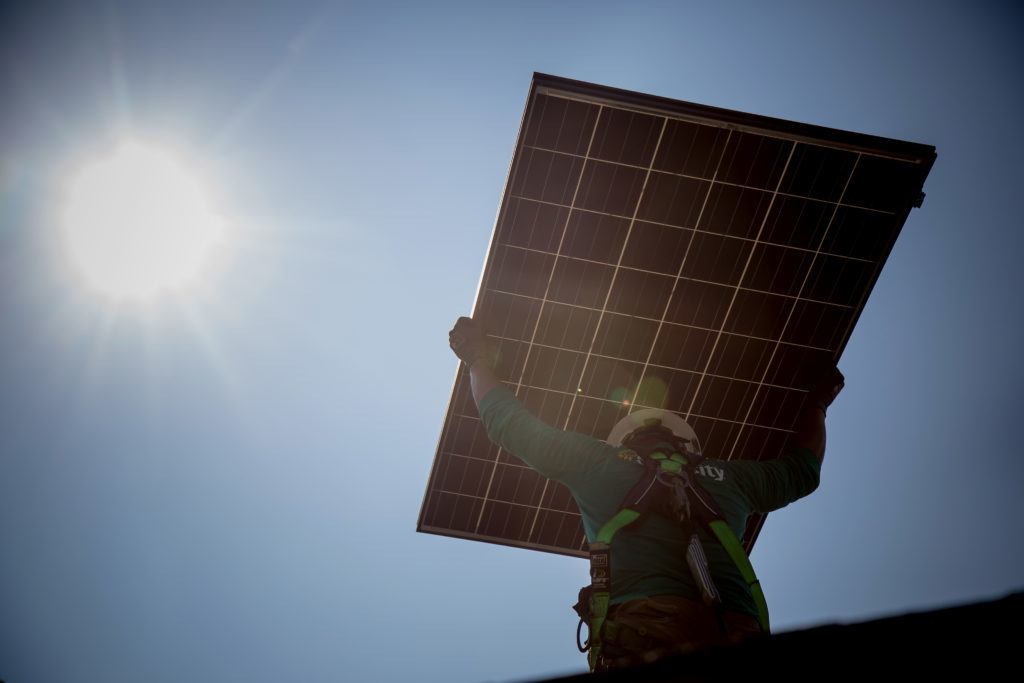
After all the dire warnings that Donald Trump’s solar tariffs would be a job killer, it’s possible that employment may tick up this year.
A solar trade group had warned that tens of thousands of jobs would be lost if Trump decided to impose tariffs on imported solar equipment, which he did in January. While 2018 is unlikely to be a banner year for the U.S. industry, solar proponents now say the number of new jobs could inch past a 2016 record. The reasons: The industry is still in growth mode, the tariffs weren’t as onerous as feared and developers hoarded panels. The tariffs will last only four years, will gradually decline in each of the last three and there are exceptions to them.
“We didn’t get the worst-case scenario,” said Ethan Zindler, a Washington-based analyst at Bloomberg New Energy Finance. “We got tariffs with various loopholes and funky ways around them.”
How the industry manages the tariffs will be discussed this week at the Bloomberg New Energy Finance Future of Energy Summit in New York.
The Solar Energy Industries Association, an industry group, had forecast before the January decision that 88,000 jobs would be lost or fail to materialize this year. But after Trump opted for four-year tariffs that decline annually, it revised its estimate to 23,000. The U.S. Bureau of Labor Statistics, meanwhile, has forecast that solar-photovoltaic installer will be the fastest-growing occupation of the decade to 2026, outpacing health care, information technology and other career tracks. It’s on track to increase more than four times as much as oil and gas derrick operator and roustabout.
“The tariffs were more of a punch to the gut than a complete decapitation,” Solar Energy Industries Association President Abigail Ross Hopper said at BNEF’s summit Tuesday.
Recommended for you
